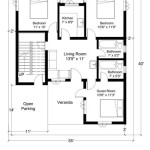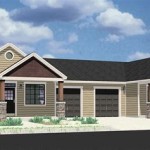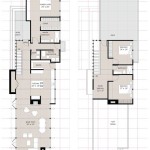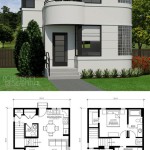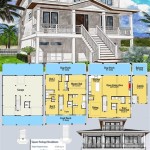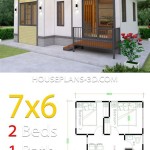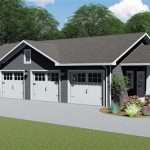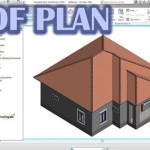Floor Plans For A 3 Bedroom 2 Bath Home: A Guide to Designing Your Dream Space
A 3 bedroom, 2 bathroom home is a classic layout that caters to a wide range of lifestyles. It offers ample space for families, couples, or individuals seeking comfortable living with dedicated areas for relaxation, entertainment, and private retreat. However, designing the ideal floor plan for this home can be a daunting task, with countless possibilities and considerations. This article provides a comprehensive guide to floor plans for a 3 bedroom, 2 bathroom home, exploring common layouts, design choices, and considerations for creating a functional and aesthetically pleasing living space.
Common 3 Bedroom, 2 Bathroom Floor Plan Layouts
Several common floor plan layouts for 3 bedroom, 2 bathroom homes cater to different preferences and needs. These layouts can be broadly categorized into:
Open Concept:
The open concept layout prioritizes shared living areas, seamlessly blending the kitchen, dining, and living room. Walls are minimized, creating a spacious and airy atmosphere ideal for social gatherings and entertaining. This layout is perfect for families who spend a lot of time together.Traditional:
Traditional floor plans tend to have more distinct spaces for each function, separating the living, dining, and kitchen areas. This layout offers greater privacy and seclusion but might feel more compartmentalized.Split-Level:
Split-level homes feature staggered levels, typically with the living area on the main level, bedrooms on a lower level, and a basement or attic on the upper level. This layout maximizes space and can offer a unique aesthetic touch.
Within these categories, there are numerous variations based on room size, placement, and flow. Architects and designers often customize floor plans to personalize them for individual needs and preferences.
Considerations for Designing a 3 Bedroom, 2 Bathroom Home
Creating an effective floor plan for a 3 bedroom, 2 bathroom home involves careful consideration of several factors, including:
1. Lifestyle and Individual Needs
The floor plan should reflect the lifestyle of the occupants. Families with young children might prioritize proximity between bedrooms and shared living spaces, while single individuals might prefer a more private and secluded layout. Consider the number of residents, their age, and their individual needs, such as accessibility for people with disabilities or the inclusion of dedicated workspace areas for home offices.
2. Site and Location
The shape, size, and orientation of the building lot influence the floor plan. Sunlight exposure, views, and surrounding structures significantly impact the design. For example, a site with a backyard ideal for outdoor entertaining might prioritize a large living space with patio access. Sloping lots might benefit from a split-level design to maximize space and incorporate natural elements.
3. Budget and Materials
Financial constraints impact design choices. Open concept layouts often require larger windows and more expensive materials for structural support, while traditional plans might be budget-friendly with simpler designs. Consider the cost of materials, construction, and finishing touches when designing the floor plan.
4. Function and Flow
The floor plan should facilitate efficient and comfortable movement throughout the home. Consider the flow of traffic, ensuring that common areas are easily accessible while preserving privacy in bedrooms and bathrooms. Avoid hallways and corridors that feel cramped or too narrow. The layout should optimize the use of space and minimize unnecessary circulation.
Tips for Designing a Functional and Aesthetically Pleasing Floor Plan
Here are some tips for designing a 3 bedroom, 2 bathroom floor plan that meets your needs and reflects your style:
- Prioritize natural light: Position windows strategically to maximize natural light. This can create a more spacious and inviting atmosphere.
- Incorporate flexibility: Plan for future needs, such as potential home offices or playrooms. Consider creating spaces that can be easily adapted over time.
- Include a mudroom or entryway: A designated area for shoes, coats, and bags minimizes clutter and creates a cleaner entryway.
- Consider storage solutions: Incorporate built-in storage closets and shelves to maximize space and minimize clutter.
- Consult with professionals: Collaborate with an architect or designer to optimize the floor plan and ensure it meets your specific needs and requirements.
By carefully planning and considering these factors, you can create a floor plan for a 3 bedroom, 2 bathroom home that maximizes functionality and aesthetics, reflecting your unique lifestyle and achieving your dream living space.

653624 Affordable 3 Bedroom 2 Bath House Plan Design Plans Floor Home It At New

Country House Plan 3 Bedrms 2 Baths 1804 Sq Ft 141 1095

3 Bed House Plans And Home Designs Wide Bay Homes Hervey

Popular And Stylish 3 Bedroom Floorplans Plans We Love Blog Homeplans Com

3 Bedroom 2 Bath Split Ranch House Plan 1400 Sq Ft

Single Story 3 Bedroom Southern Country Home With Open Living Space Floor Plan Homes House Plans

3 Bedroom 2 Bathroom House Plans Floor Simple

Home 28 X 56 3 Bed 2 Bath 1493 Sq Ft Sonoma Manufactured Homes

3 Bedroom 2 Bath 1 200 Sq Ft Alleghany

Custom 841 Sq Ft Modern House Plans 3 Bedroom 2 Bathroom With Free Cad
Related Posts

